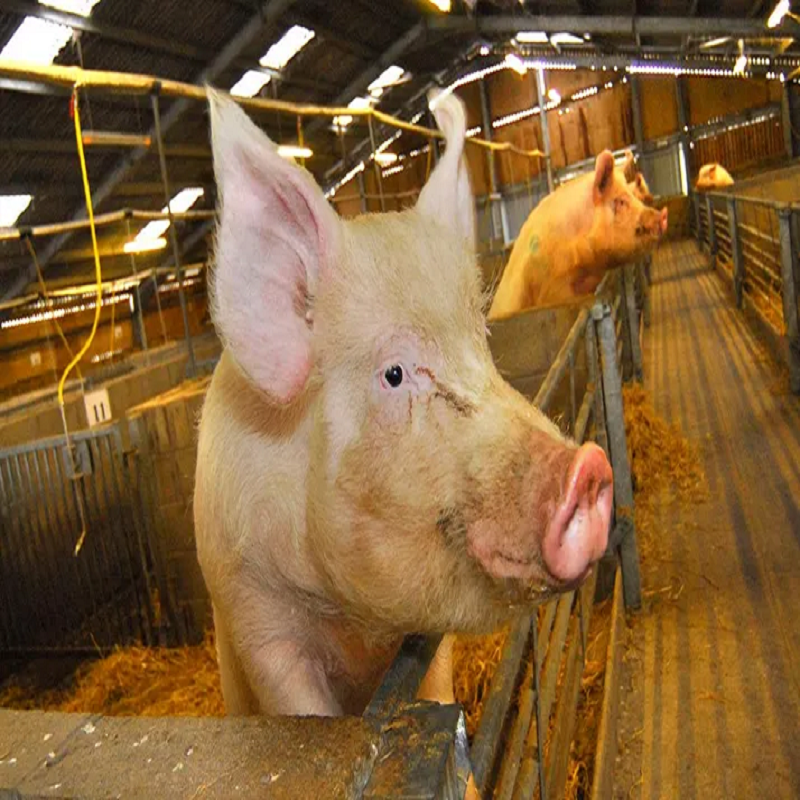What are the effects of organic acids and acidified glycerides in "forbidden resistance and reduced resistance" ?
Since the European ban on antibiotic growth promoters (AGPs) in 2006, the use of organic acids in animal nutrition has become increasingly important in the feed industry. Their positive impact on feed quality and animal performance has been around for decades, as they are increasingly attracting the attention of the feed industry
What are organic acids?
Organic acids" refers to all acids called carboxylic acids built on a carbon skeleton that can alter the physiological structure of bacteria, causing metabolic abnormalities that prevent proliferation and lead to death.
Almost all organic acids used in animal nutrition (such as formic acid, propionic acid, lactic acid, acetic acid, sorbic acid or citric acid) have an aliphatic structure and are energy sources for cells. In contrast,
benzoic acid is built on aromatic rings and has different metabolic and absorption properties.
Supplementation of organic acids at appropriately high doses in animal feed can increase body weight, improve feed conversion and reduce the colonization of pathogens in the gut.
1, reduce the pH value and buffering capacity in the feed as well as antibacterial and antifungal effects.
2, by releasing hydrogen ions in the stomach to reduce the pH value, thereby activating pepsinogen to form pepsin and improve protein digestibility;
3. Inhibition of gram-negative bacteria in the gastrointestinal tract.
4, intermediate metabolites - used as energy.
The effectiveness of an organic acid in inhibiting microbial growth depends on its pKa value, which describes the pH of the acid at 50% in its dissociated and undissociated form. The latter is the way in which organic acids have antimicrobial properties. It is only when organic acids are in their undissociated form that they can pass through the walls of bacteria and fungi and alter their metabolism that they have antimicrobial capabilities. Thus, this means that the antimicrobial efficacy of organic acids is higher under acidic conditions (such as in the stomach) and reduced at neutral pH (in the intestine).
Therefore, organic acids with high pKa values are weaker acids and more effective antimicrobials in the feed due to the higher proportion of undissociated forms present in the feed, which can protect the feed from fungi and microorganisms.
Acidified glyceride
In the 1980s, American scientist Agre discovered a cell membrane protein called aquaporin. The discovery of water channels opens up a new area of research. At present, scientists have found that aquaporins exist widely in animals, plants and microorganisms.
Through the synthesis of propionic acid and butyric acid and glycerol, α-monopropionic acid glycerol ester, α-monobutyric acid glycerol ester, by blocking the bacteria and fungi glycerol channel, interfere with their energy balance and membrane dynamic balance, so that they lose energy sources, block energy synthesis so as to play a good bactericidal effect, and no drug residues.
The pKa value of organic acids is their inhibitory effect on microorganisms. The action of organic acids is usually dose-dependent, and the more of the active ingredient reaches the site of action, the higher the action required. This is effective both for the preservation of feed and for the nutritional and health effects on the animals. If stronger acids are present, the salt of organic acids can help reduce the buffering capacity of the feed and can provide anions for the production of organic acids.
Acidified glycerides with unique structure, α-monopropionate and α-monobutyric glycerides, have remarkable bactericidal effect on Salmonella, Escherichia coli and other gram-negative bacteria and clostridium by inhibiting the water-glycerine channel of bacteria, and this bactericidal effect is not limited by pKa value and PH value; It not only plays a role in the intestine, but also this short-chain fatty acid glyceride is absorbed directly into the blood through the intestine, and reaches various infected parts of the body through the portal vein to better prevent and control systemic bacterial infection.

Post time:
Aug-22-2024
2N`Q)59Z1G}VK.png)




